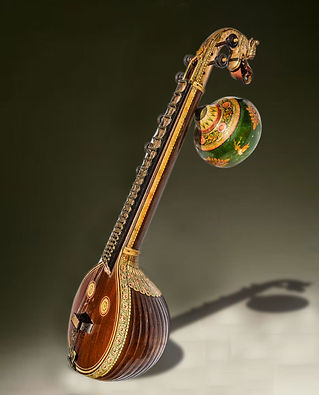Music & Painting
Teaching from the heart
Carnatic music is traditionally played on a melody instrument such as the violin, viola, or flute with an accompaniment made up of a rhythm instrument such as the mridangam, kanjira, ghatam, or tabla. Carnatic music has been one of the most popular forms of traditional Indian music since it was introduced to other parts of India. The roots of Carnatic music are found in Hindu culture and religion. Painting emerged in prehistory when nomadic people made use of paintings on rocky walls. There is increasing evidence in medicine and the field of neuroscience that art enhances brain function by impacting brain wave patterns, emotions, and the nervous system. These benefits don't just come from making art, they also occur by experiencing art.

How does music help academically?
Studies have shown that music produces several positive effects on a human's body and brain. Music activates both the left and right brain at the same time, and the activation of both hemispheres can maximize learning and improve memory.
Students benefit in developing Self-confidence, Public speaking, Teamwork, Grit, Memory, Discipline.
Students do better academically, improve grades, do well in school activities and improve
their admissions into colleges.


Workshops are summer or winter group projects, aligned with the school holidays and engaging your kids in fun and positive learning environment. Focus on Music; vocal singing, the Veena instrument, and painting. Aim-focused and accelerated learning, using vacations beneficially for fun and learning. Duration is 7 days or 15 days.

History of Carnatic Music
Worshipped and Practiced from ancient times
The origin of Carnatic music dates to the 13th century A.D. with a book named
Sangeetha Rathnakara was written by Saranga Deva. It was spread and popularized with
significant contributions by composers like Purandaradaasar (15th century A.D.) and the
Trinity of Carnatic music Sri Thyagaraja, Sri Muthuswami Dikshithar, and Sri Shyama
Shasthry (18th century A.D.) who were contemporaries. Their compositions are filled with
devotion and are unique in their own way. They have a universal appeal across all sections
of classical music connoisseurs, language being no barrier.




Testimonials
My daughter Hamsika Yalla started going to Manjula garu’s Raag and Rang when she was 6 years old . She learned Carnatic music and also taken art classes from her. She have taken classes from her pretty much more than 6 years and have learnt both art and music very nicely . Manjula garu is very talented and good teacher for both music and art and I really appreciate her effort in teaching the kids and bringing the talents out of the kids . Manjula garu’s patience level toward kids was amazing and my daughter is truly blessed to have a teacher like Manjula garu!
Sujatha Yatham
Tech leader in IT
It is really a pleasure to have Ms. Manjula as a Carnatic vocal teacher. I'm very impressed with the traditional way of teaching like saying omkaram and sitting on the floor. She also uses many unique techniques to teach kids so they can reach their full potential. I'm happy see my daughter shine under her guidance. Thank you Ms. Manjula.
Mani
The Friendliest place to learn Music and Arts in Dallas! From the front door to the Music room, there is display of Manjula Madam’s Arts & Crafts, Oil Paintings and Her special collection of Ganesha’s!Her smiley face, warm hugs are Welcoming to our Children, and Students (kids and adults equally) open up, and practice with happiness and inner satisfaction! She has very large studio and very nice ambience to support the classes.
Manjula Madam is an All Rounder and shows her artistic skills universally, while teaching the class or outside!
Raman V., Irving, Texas



.png)






